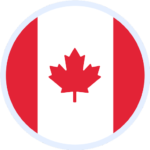Obtaining a Canadian student visa is an important step in the application process for international students. After all, you won’t be able to enter the country if you don’t have a visa. However, a visa isn’t the only important document international students need. You’ll need a Canadian study permit, too!
Study permits are issued by the Government of Canada and allow a foreign national to study at specific academic institutions (known as “designated learning institutions” or DLIs). But while many people use the terms student visa and study permit interchangeably, they actually refer to two different things.
Note: The content of this post is intended only as information. For official guidance on student visas and study permits, check the Government of Canada’s website or speak with an authorized representative.

Canadian Study Permits vs. Student Visas
Here’s a quick comparison of what study permits and student visas do:
- Student visa: allows you to enter Canada
- Study permit: allows you to stay and study in Canada
After you’ve applied for and been accepted into a study program at a Canadian institution, you’ll need to apply for a study permit. It’s a good idea to apply early, as Canadian study permit processing times can be a few weeks or a few months, and vary by country.
To check how long study permit processing times are, use the Government of Canada’s application processing times calculator.
When your study permit application is accepted, you won’t receive your permit right away if you applied outside of Canada. Instead, you’ll receive:
Essentially, the visitor visa or eTA functions as your student visa: it authorizes you to travel to Canada. However, these documents grant only conditional authorization to arrive in Canada.
After landing at the airport, or arriving at a Canadian port of entry, you’ll participate in a short study permit interview with a Canadian Border Services (CBSA) officer. They’ll ask you questions about your studies and review your supporting documentation. So, before you get on your flight, make sure you have these documents on hand, not packed in the middle of your luggage!
Common questions from border services officers include:
- What is your reason for coming to Canada?
- What program are you taking?
- What level of study are you pursuing?
- How long are you staying in Canada?
- Do you have any restrictions on your ability to work?
Ultimately, the border services officer has the authority to either grant you a study permit or deny you entry into Canada. It’s important to note that even if your study permit has been approved by Immigration, Refugee and Citizenship Canada (IRCC), a border services officer can still refuse you entry. That’s why it’s very important that you’re well-prepared, can speak to your study plans, and have all the study permit supporting documents you need.
In order to study in Canada, you’ll need to prove you have enough money to support yourself without needing to work full-time. Our helpful guide walks you through how to get proof of financial support—check it out!

Maintaining Your Canadian Study Permit
While studying in Canada, it’s important that you follow all the requirements of your study permit and keep it up-to-date. For example, some study permits will have conditions that allow international students to work off-campus. Meanwhile, other students may only be able to work on-campus.
Keep in mind that if you change your name or address, you must update your study permit’s profile information. Luckily, this can be done online using the Government of Canada’s web form!
It’s also smart to understand what you can and can’t do with your study permit. For example, in the past, if a student wanted to change their college or university, they could do so without applying for a new study permit. However, in November 2024, the rules changed. Now, if you’d like to change which post-secondary institution you’re attending, you’ll need to functionally get a new study permit by applying to extend your current one.

We hope this guide helped you understand the difference between student visas and study permits in Canada. As you get ready to go, use our pre-arrival checklist for international students to stay organized!
Ready to look for study program options in Canada? Find the program that matches your goals on the free-to-use ApplyBoard platform today.
